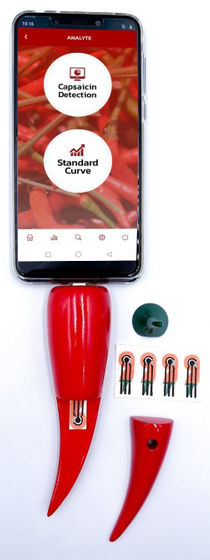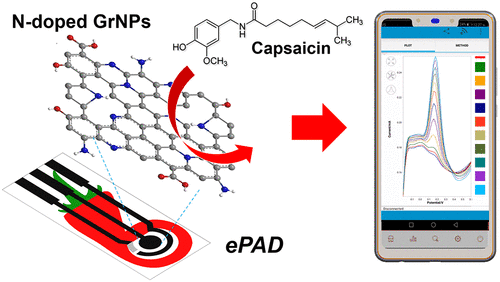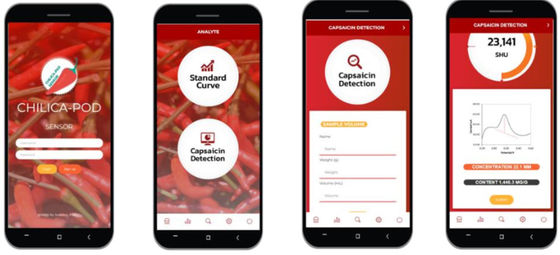Introducing 'Chilica-pod', a pepper-type device that can measure the spiciness of peppers with a smartphone

The
N-Doped Graphene Nanoplatelets for Direct Capsaicin Detection in Chili Pepper Samples | ACS Applied Nano Materials
https://pubs.acs.org/doi/full/10.1021/acsanm.0c02079
Chili-shaped device could reveal just how hot that pepper is --American Chemical Society
https://www.acs.org/content/acs/en/pressroom/presspacs/2020/acs-presspac-october-21-2020/chili-shaped-device-could-reveal-just-how-hot-that- pepper-is.html
Capsaicin , which is the main component of the spiciness of peppers, is not only popular as a spice, but also has various health benefits such as antioxidant, anti-inflammatory, and carcinogenesis-suppressing effects. Demand for additives and pharmaceuticals is increasing. However, in order to accurately quantify the spiciness of peppers and foods using peppers, it has been necessary to measure with expensive and large-scale equipment.
Therefore, Warakorn Limbut, a professor of analytical chemistry at Prince of Songkla University in Thailand, set out to develop a method for measuring capsaicin content accurately and inexpensively. On October 21, 2020, we announced that we have succeeded in developing a pepper-type portable device 'Chilica-pod' that can be used by connecting to a smartphone.

The disposable sensor part of Chilica-pod uses graphene nanoplates coated with nitrogen atoms to improve conductivity. When capsaicin touches this sensor, an electric current is generated by the oxidation reaction and reduction reaction, and by detecting this, the capsaicin content is measured.

When Limbut's research team actually dissolved 6 dried pepper samples in ethanol and measured the capsaicin concentration with 10 Chilica-pod sensors, it was able to measure accurately in the range of 7.5 to 90

'The Chilica-pod measurements were not significantly different from those measured by UV-Visible spectroscopy , so the platform is a portable sensor for capsaicin and a variety of materials in the future,' the research team said in a paper. It shows great potential for the development of sensors that can expand the scope of analysis. '
Related Posts:







